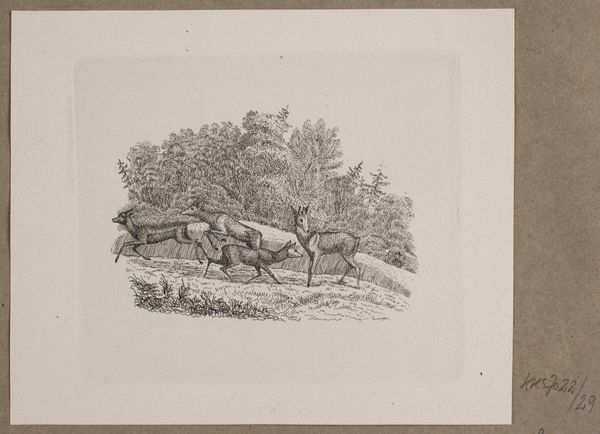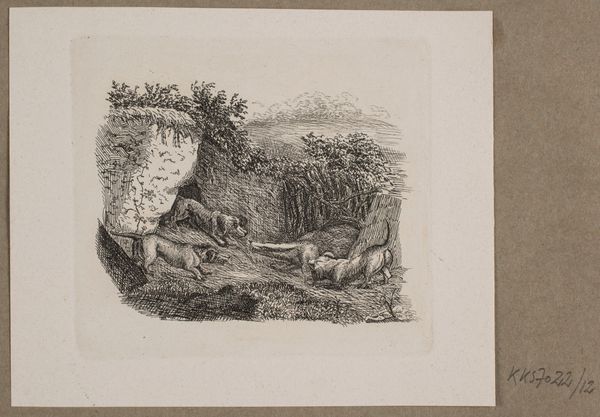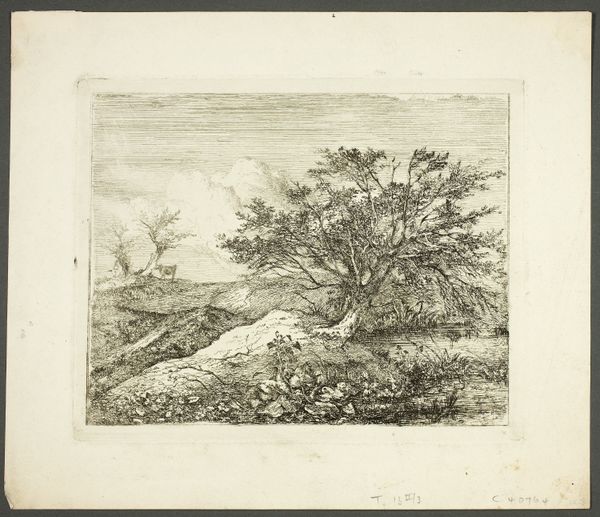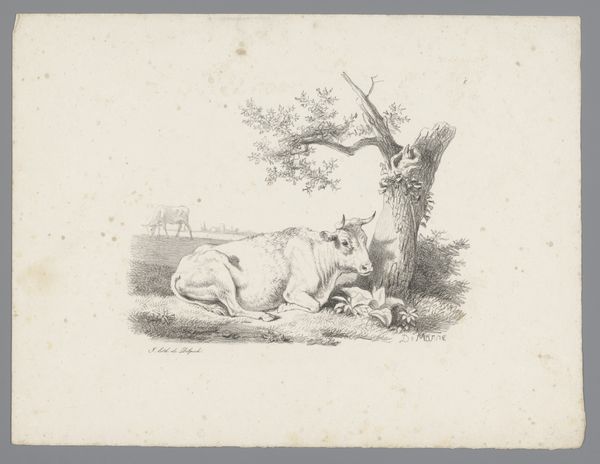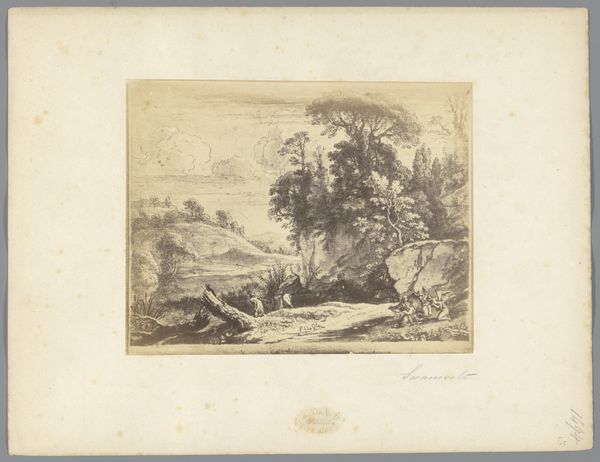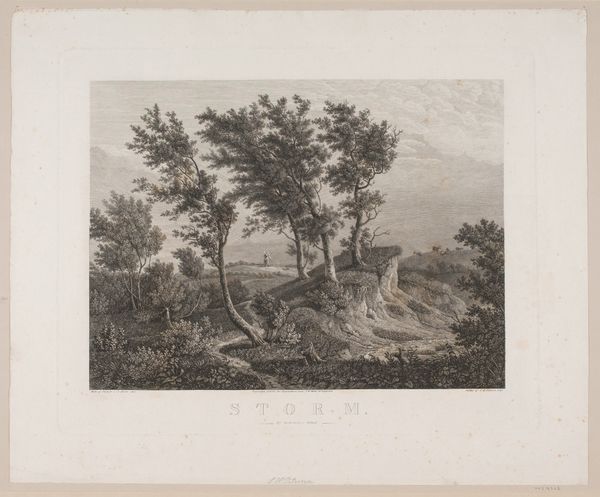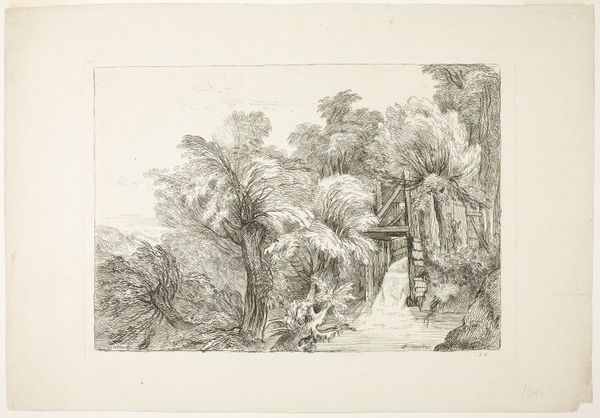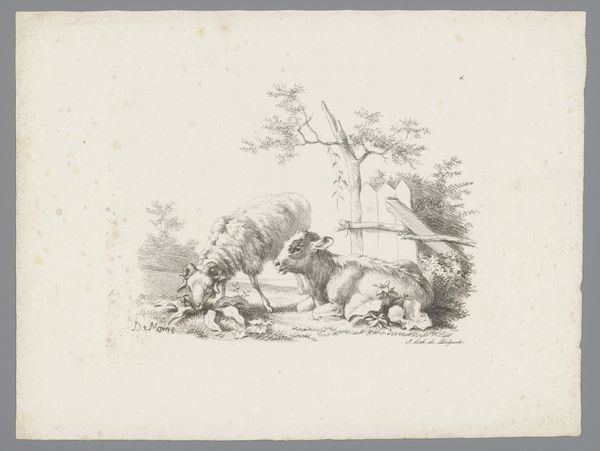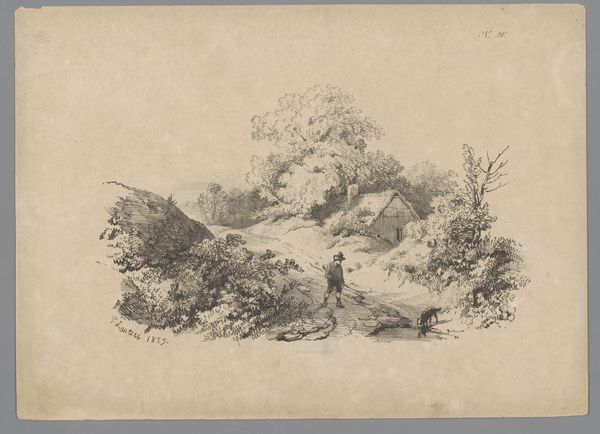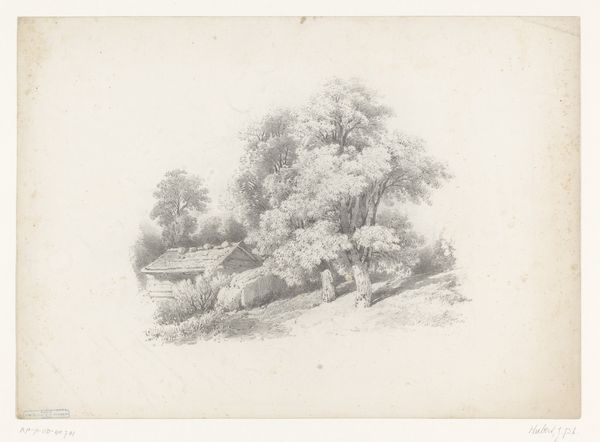
print, engraving
# print
#
landscape
#
romanticism
#
genre-painting
#
engraving
Dimensions: 88 mm (height) x 110 mm (width) (plademaal)
Curator: Welcome! We are standing before Vilhelm Kyhn's illustration, crafted around 1838 as a print. It is an engraving, titled "Illustration til O. Specter, "Fabler for Børn"". Editor: The first impression I get is…unease. The lines are delicate, but there's a latent tension here. A quiet, melancholic scene with high stakes! Curator: Absolutely. Looking at the hunter’s clothing, his stance with the rifle—it's a moment frozen in time where the labor of hunting for survival clashes directly with the animal's instinct to flee. Note the contrast in texture; the soft, grassy mound versus the almost frantic, scrabbling marks of the hare. This isn't just a scene, but also about resource management and man's relationship to nature and material procurement. Editor: The hare, for me, represents vulnerability, the swift movement captured is an ancient symbol. Consider the folklore across different cultures—sometimes it’s associated with the moon, intuition, or heightened senses. This chase touches on themes of predator and prey which resonate deeply in our psyche. Curator: Agreed. Kyhn worked within the confines of readily available materials. Paper and ink. But what’s significant to consider are the means by which this imagery would have circulated. As an illustration for children’s fables, the engraving process ensured multiple copies. It’s a narrative intended to be distributed and consumed. A deliberate, pedagogical effort if you will. Editor: And the visual symbols become crucial in transmitting moral or cautionary messages, don’t they? The landscape almost seems to be observing this dramatic action. It’s not merely a backdrop, it carries this emotional weight. It seems imbued with an awareness of time. Curator: Fascinating how a simple print speaks volumes about societal roles, environmental manipulation, and material culture. A testament to what can be achieved with deliberate application, readily available resources, and skilled labor in visual storytelling! Editor: It highlights the ongoing dialogue between humanity and nature. The hare will continue to signify this fraught relationship, while serving as a constant, universal echo of nature itself.
Comments
No comments
Be the first to comment and join the conversation on the ultimate creative platform.
